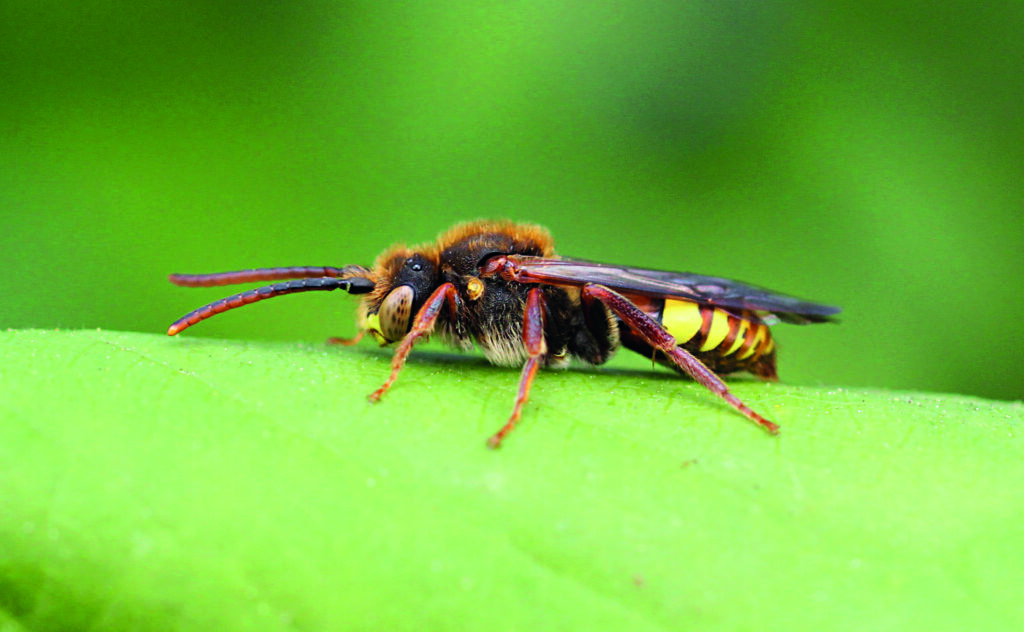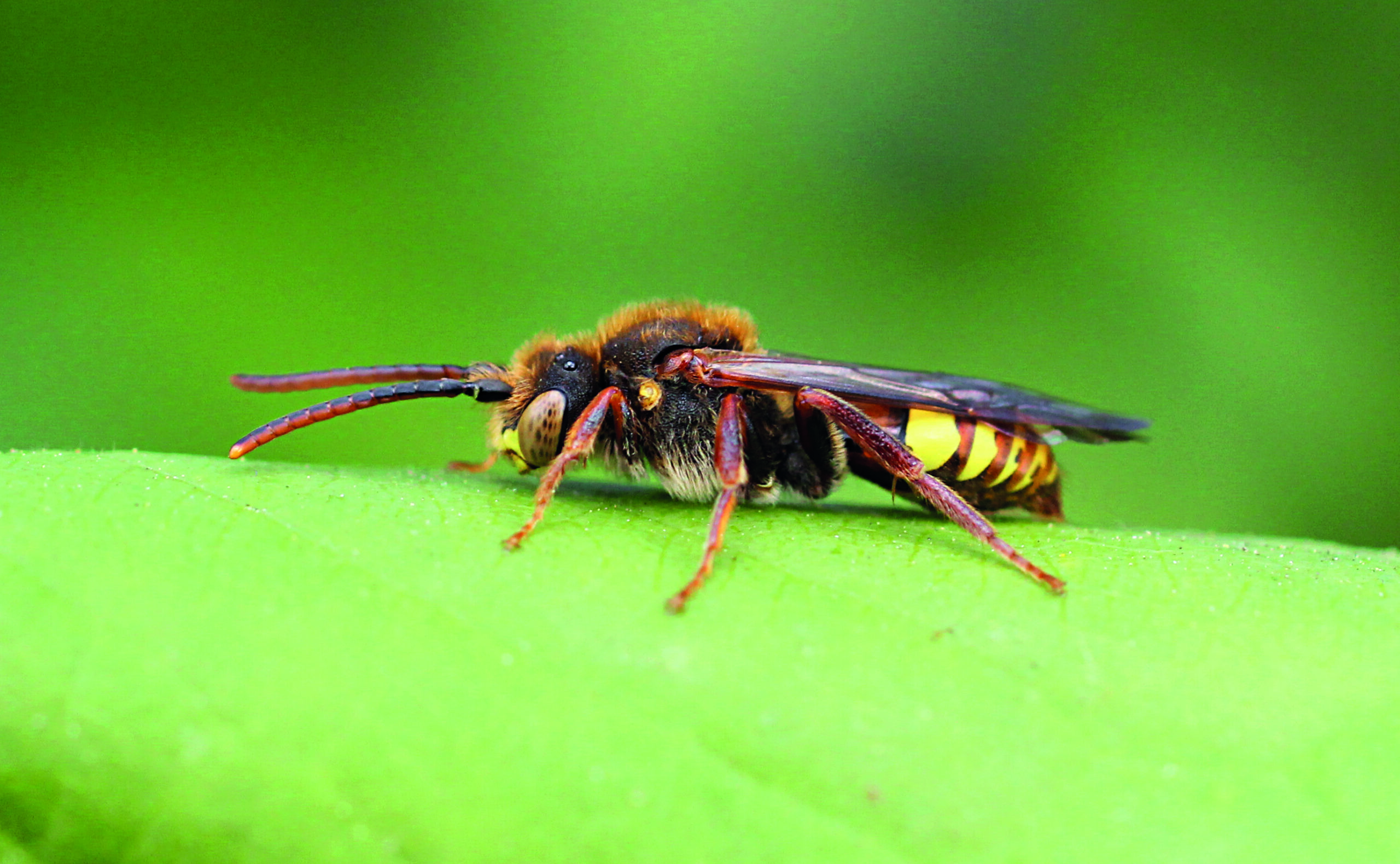18/05/2023

This bee may look a bit scary with its striking yellow wasp-like markings but don’t be alarmed. Like all solitary bees it won’t sting.
It’s about 7.5 to 10mm in length and can usually be spotted flying low above bare patches of soil or lawn. As its name suggests it doesn’t have a home, so it is searching for a home in another bee’s nest, usually a mining bee’s burrow.
There are 34 different species of Nomad bee in the UK and 850 worldwide. They share these wasp-like markings and are what are known as kleptoparasites, because they steal the nest of a host bee.
This one lays its eggs in an unsealed cell in the burrow of a Grey-patched mining bee, or a Buffish mining bee, or a Chocolate, or Oak mining bee. When the Nomad bee’s egg hatches, its larvae eats the egg, or larvae, of the host bee and then helps itself to the pollen stores too. The larvae lives in the cell where it pupates and develops into an adult bee and emerges the following spring around the same time as its host bees come out.
This behaviour is hard on the mining bees, but nature works in mysterious ways and every species, even these kleptoparasites, have a role to play such as keeping the population of mining bees in check.
Nomad bees can help your bee spotting skills
For anyone trying to spot mining bees in the last few weeks, you’ll know how difficult it is to see these small brown bees, let alone tell them apart. The Nomad bees can help. If you see one, (and they are so much easier to spot) then you know the host bee is nearby. And Nomad bees are an indicator that the host bees are healthy.
These bees are around from March to June, but peak in May. You can tell a Flavous nomad from a Gooden’s nomad bee because the former has a red-coloured segment at the top of its abdomen, while the latter has only yellow and black stripes.
Ways you can help Nomad bees
You may feel that you don’t want, or need, to help this bee, but like all bees they are part of the ecosystem and to ensure ecosystems are rich in biodiversity it’s important to help them too.
1. Allow wild flowers to grow
Nomad bees don’t ever collect pollen – not on their back legs, nor under their abdomen like most other solitary bees. This is because their larvae eat pollen provided not by Mum, but by the female host bee.
However, they do forage for nectar on spring blossoming shrubs and many wild flowers such as Greater Stitchwort, Garlic Mustard, Cow Parsley, Bluebells and dandelions.
2. Leave patches of bare earth, or lawn, for mining bees to nest:
By help the mining bees, you are helping the Nomad bees.
For other bees to see this month, how to tell them apart and how to help them sign up to Alison’s Buzz newsletter
Words: Alison Benjamin, Urban Bees


